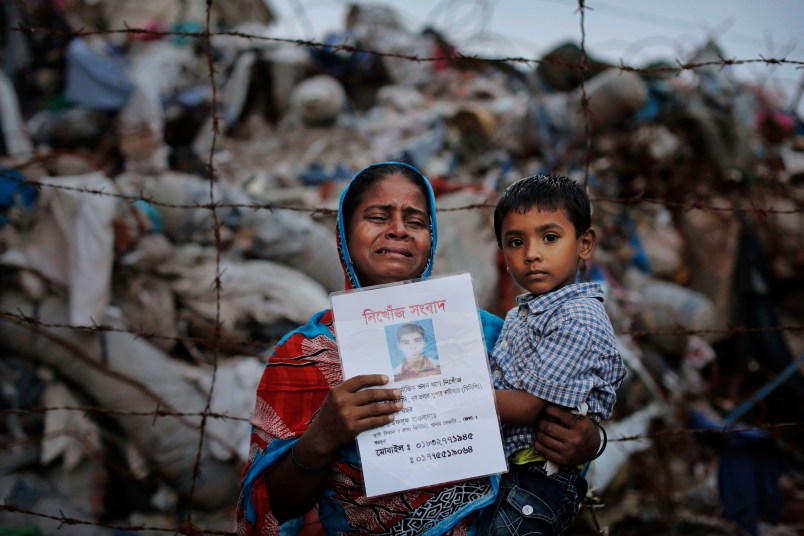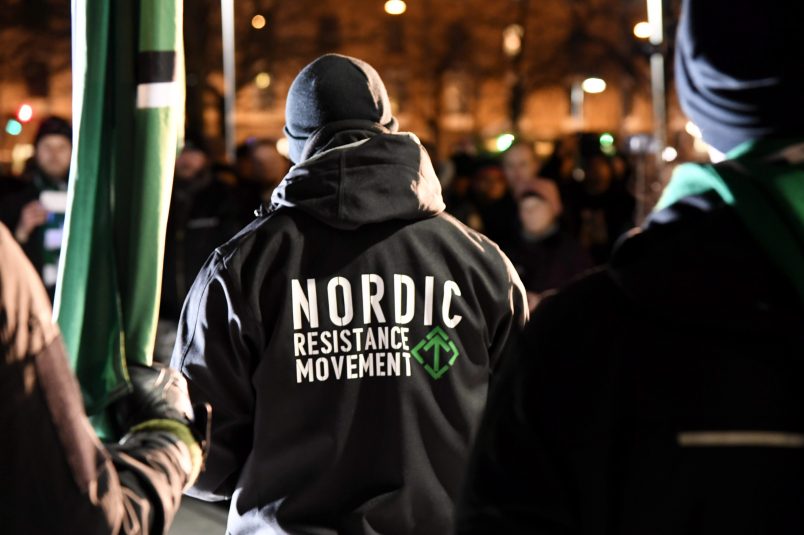Two years ago today, the Rana Plaza factory in Bangladesh collapsed. The accident is considered the deadliest accidental structural failure in modern human history with 2,500 injured and a death toll clocking in at just over 1,100. The building was originally designed for shops and offices, not industrial factories. Warnings to avoid using the building after cracks appeared the day before had been ignored and when garment workers were ordered to return the following day the building collapsed during the morning rush hour.
In 1911, another major garment factory collapse occurred. You may remember the Triangle Shirtwaist Factory fire from your United States history class. On March 25, 1911, 123 women and 23 men died either from the fire directly, smoke inhalation, or by falling or jumping to their deaths. The fire was caused by a lit cigarette that was thrown into a waste bin containing fabric scraps and the fire quickly spread throughout the factory. Back then, it was common practice to lock doors to stairs and exits to keep workers from taking unauthorized breaks. But in this case, the policy kept them from escaping. In response, the International Ladies’ Garment Workers’ Union formed to fight for better working conditions as well as new factory safety standards. While these reforms led to better conditions for workers in the United States, this has also led to expensive local labor.
Because of the newly high cost of labor within the United States, international fashion companies look for outsourced labor as a way of cutting costs. Many families lost their primary, and in some cases only, provider of income in the Rana Plaza disaster and have demanded compensation from the companies involved. The Clean Clothes Campaign has compiled a chart of involved companies and whether or not they have compensated the victims. Even after two years, many victims haven’t been fully compensated for such an avoidable disaster. This tragedy has also put Bangladesh in a tricky situation: Garment production is one of its largest labor sectors and if they significantly raise worker conditions and wages, fashion companies may choose a different, cheaper country to outsource their clothing production. Some of the companies have compensated their victims, but have they changed the way they do business?
There is a ray of hope from clothing companies that consider social responsibility as one of their central tenets. Some of these companies include:
Everlane follows its mission of “radical transparency” to expose every step of the production process to its customers. On the website, you can find photos and descriptions of each of their factories. Everlane also takes advantage of Black Friday to spread its message of transparency. In 2013, the site closed for Black Friday in order to expose the unsustainability of radical sales. This past Black Friday, all profits went to building a recreation facility for their silk factory in China.
Cuyana is dedicated to its “fewer, better pieces” philosophy that encourages having a leaner closet with higher quality garments. Like Everlane, Cuyana is online-only which allows them to keep costs down while also using quality materials and skilled workers.
Zady has an explicitly socially responsible mission stating that “[they] believe in products with solid construction, the best materials, the lowest environmental footprint, the highest labor standards and timeless style, above all.”
Today is Fashion Revolution Day. This commemorative day, made public by Fashion Revolution, is meant as a metaphorical call to arms to be held every April 24 to keep the most vulnerable in the supply chain in the public eye. In a perfect world companies would treat employees fairly on behalf of their own conscience, but in our capitalist one we can all vote with our dollar to encourage ethical treatment of everyone involved.
While we may not all have the means to choose which brands we shop from, we can all do our best to be more conscious when we have the opportunity. Join in on Fashion Revolution Day (#fashrev on Twitter) by asking your favorite clothing brands “Who made my clothes?”
Amy Boone is a software engineer with a passion for history and fashion. She is the creator and editor of This Tailored Life, a fashion history and culture blog. She can be followed on Twitter at @amymboone. A version of this post originally appeared on Medium.










Wow! Thanks for this article in TPM. I’m an original member who reclaims used, particularly really used, stained and torn, clothing made of natural fibers, dyeing in indigo and eco dyeing them as art, employing the Japanese tradition of Boro.